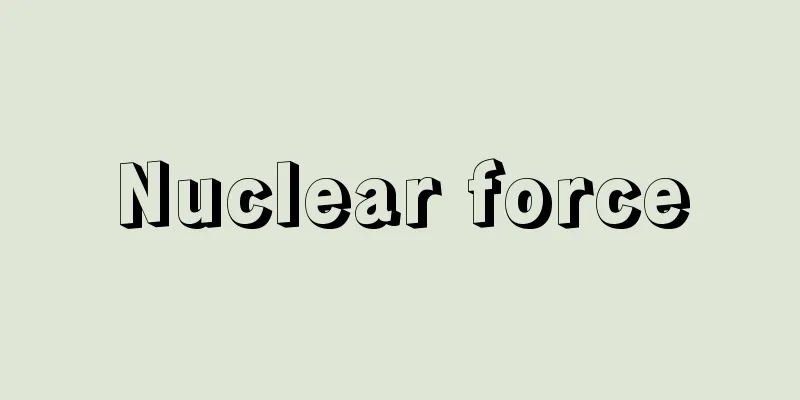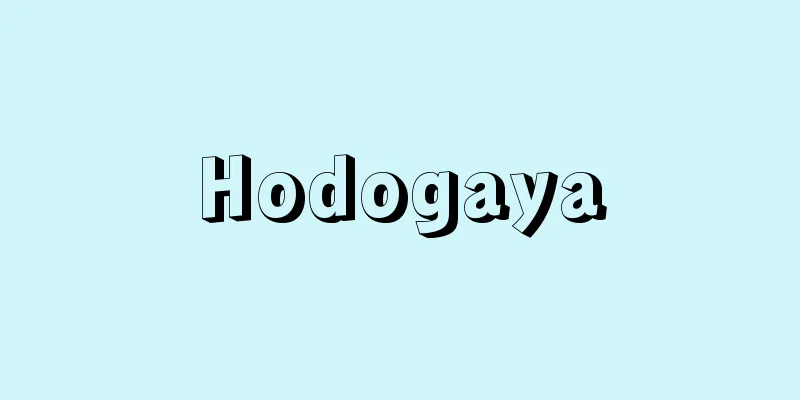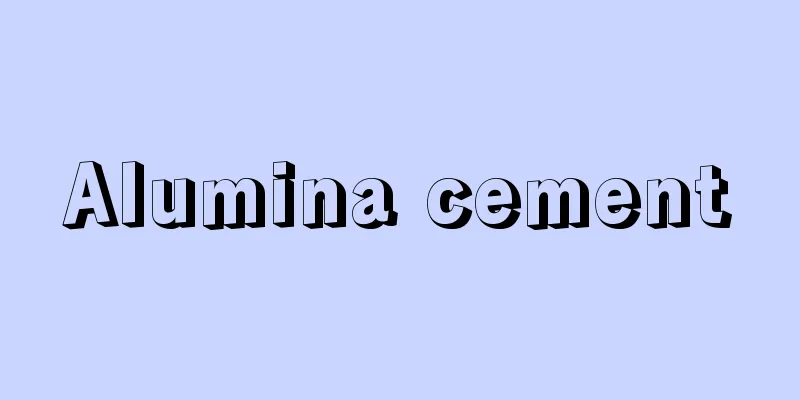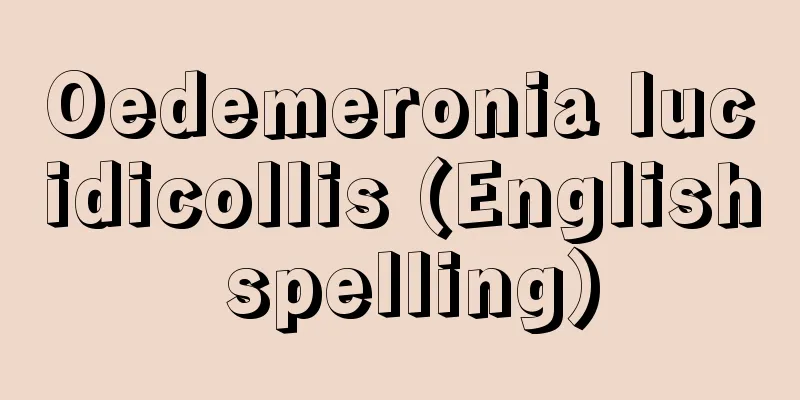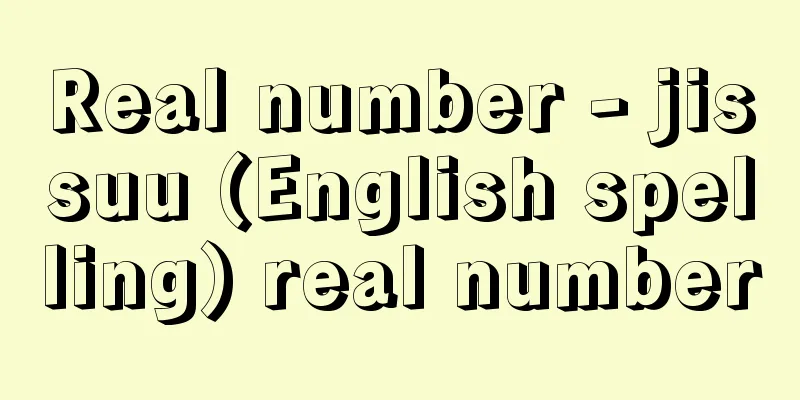Peru - Peru (English spelling)
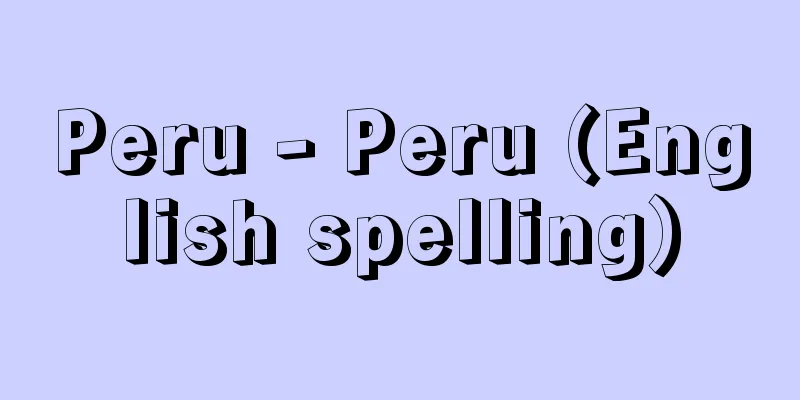
|
A republic located in the middle of the Pacific coast of South America. Its official name is the Republic of Peru (República del Perú, Spanish). It borders Ecuador and Colombia to the north, Brazil and Bolivia to the east, Chile to the south, and the Pacific Ocean to the west. Its area is 1,285,216 square kilometers, its population is 24,800,768 (1998), and its population density is 19 people per square kilometer. Its capital is Lima. The country's name comes from Bilú, an indigenous word referring to the Pacific coast south of Panama, and Perú, meaning river. It was once the land of the prosperous Inca Empire, and during the Spanish colonial period it flourished as the political, economic, and cultural center of South America. It continues to experience political instability and is controlled by American capital, but in recent years it has been promoting nationalist policies. It is a world-famous earthquake-prone country, with more than 70,000 deaths from the great earthquake (magnitude 7.7) on May 31, 1970. [Shozo Yamamoto] Nature and GeographyThe Andes Mountains run parallel to the coastline through almost the center of the country, dividing the country into three regions: the coastal area (Costa) in the west, the mountainous area (Sierra) in the center, and the forest area of the upper Amazon basin (Montanilla) in the east. The coastal area (costa) is a narrow coastal plain that is only 40-80 km wide and 2,200 km long. Most of it is dry desert, with oases along the many short rivers that flow from the Andes. Irrigation cultivation of sugarcane, cotton, and other crops is practiced, and many coastal cities and ports, including the capital Lima, have developed here, making it the economic center of the country. The Peruvian Current (Humboldt Current) flows offshore, making it a treasure trove of fish. Furthermore, it is rich in mineral resources, with oil fields in the north and guano (bird droppings) production areas on neighboring islands such as Lobos Island. Although it is located at a low latitude, the temperature is generally low due to ocean currents, and thick fog occurs in winter. Precipitation is extremely low. For your information, the annual average temperature in Lima is 18.4°C, and the annual precipitation is 31 mm. The mountainous region (Sierra) is located between the eastern and western Andes, with a width of 300 to 400 km and an altitude of 4,000 m. The climate ranges from the Andean glacial zone, with Huascaran (6,768 m) as its highest peak, to the temperate climate zone. Cusco, the center of the Inca Empire, conquered by the Spaniard Pizarro in 1532, is located in the center of the southern Sierra. Lake Titicaca, on the border with Bolivia, is the highest lake in the world (3,812 m above sea level), shrouded in Inca legends. It is rich in mineral resources, and about 6 million indigenous people raise llamas and other animals while engaged in small-scale subsistence farming. The plateau is cool, has moderate rainfall, and is suitable for cultivation and habitation. For a long time, it prospered through silver mining, but lost out to competition with Mexico and declined. However, in the 20th century, mining of copper, lead, zinc, gold, etc. became popular. The forested region (Montanilla) on the eastern slope of the Andes is a flat area created by the Ucayali River and many other tributaries of the Amazon, and accounts for half of the country's land area. It has great economic potential, but is covered by tropical jungle, has a population of less than 14% of the total population, and is largely unexplored. In 1943, a road was completed from Lima across the Andes to Pucallpa, and regional development is slowly but surely underway. Peru's flora reflects its topography and is different for the coast, the mountains and the forests. The coast has a very dry climate, the land is barren and there are only a few cacti scattered on the lower mountain slopes. At an altitude of 800-1400 meters, where the coastal clouds meet the Andean slopes, a type of vegetation called loma is found only from June to October. In the mountains, planted eucalyptus trees are prominent, with only a few other shrubs. At higher altitudes, ichu (a tough grass eaten by llamas) appears. In the low, rugged country along the border with Ecuador, dense rainforests are found. The upper limit of the forests in the forests east of the Andes is around 3000-3300 meters above sea level. At the upper limit, they form cloud forests, below which there is tropical rainforest (selva). The lower mountain slopes, cuesta plateaus, and eastern plains are covered with highly mixed evergreen broadleaf forests. [Shozo Yamamoto] historyThe Inca people, who settled in Cusco in the early 13th century, began to expand their territory through military force from around 1440, and their empire extended to what is now Ecuador, Bolivia, northwestern Argentina, and northern Chile by around 1525. In 1532, Spanish conquistadors led by Francisco Pizarro arrived in Peru in search of gold, and through a cunning plot, they captured and executed the Inca Emperor Atahualpa, and took control of Cusco in January 1533. This marked the end of the Inca Empire and the beginning of Spanish rule. A viceroy was sent to Lima as a representative of the King of Spain, and it became the base of control of South America. The Viceroyalty of Peru extended to Panama in the north, Venezuela in the east, and Chile and Argentina in the south. Because the territory was so vast, in the 18th century, the northern part (present-day Venezuela, Colombia, and Ecuador) was divided into the Viceroyalty of New Granada, and the southern part (present-day Argentina and Uruguay) into the Viceroyalty of La Plata. The colonial system of control over the indigenous peoples is called the encomienda system, which was introduced in Peru by Pizarro as early as 1534. This system allowed the indigenous peoples to be conscripted as laborers and to pay tribute in exchange for converting them to Christianity. In the second half of the 16th century, the indigenous population was drastically reduced by epidemics and forced labor, so a system called reduction was introduced to forcibly relocate the indigenous peoples to new areas in order to maintain agricultural production. During the colonial period, mining flourished, with the discovery of the Potosi silver mine in 1545. The labor force for the mines was provided by forced labor known as the mita system. This labor was so harsh that it was said that no one would return alive. Peru also became an important supplier of textiles to Spain, and the mita system was also introduced to textile factories called obrajes. The exploitation of the colony was so severe that from 1780 to 1781, a rebellion by indigenous people led by José Gabriel Condorcanqui (Túpac Amaru II) broke out. He was a descendant of the last Inca emperor, Túpac Amaru, who was executed for resisting the Spanish conquest, and he rebelled to realize social justice, including the abolition of the mita system. He was captured in April 1781 and executed along with his wife, children, and family, but the rebellion was continued by his cousin Diego Cristóbal Túpac Amaru and others and continued for over a year. In the 19th century, when independence movements arose in other Spanish colonies, the Viceroyalty of Peru, as the largest base of Spanish rule in Latin America, sent royalist troops to overthrow newly independent governments in various regions. However, in 1821, San Martin's army, which had achieved the liberation of Chile, succeeded in capturing Lima and declaring Peru's independence. As the royalist army continued to resist inland, San Martin met with Simon Bolivar in Guayaquil, Ecuador in 1822 to ask for his support for the final liberation of Peru, but the meeting broke down and San Martin returned to Argentina. Peru's complete independence was achieved by Bolivar in 1824, and the Constitution was established in 1825, with José de la Mar as the first president. Immediately after independence, the political situation was unstable due to internal conflicts between local caudillos and wars over the annexation of Bolivia, but in 1845 Ramon Castilla achieved national unification, and the economy stabilized as the development of guano (bird droppings) progressed with British capital. However, in 1879, Chile declared war on Peru and Bolivia over the development of saltpeter resources in the Atacama Desert, starting the Pacific War. In January 1881, Chilean troops occupied Lima, and in October 1883, the Treaty of Ancón was signed, with Peru ceding the Tarapacá Department to Chile. In the peace treaty signed between Chile and Bolivia in 1904, Bolivia lost the Antofagasta Department. After the provinces of Tacna and Arica were temporarily under Chilean control, a referendum was held in 1929 to decide whether Tacna should belong to Peru or Arica to Chile. The Pacific War caused the devastation of the guano mines and the loss of the saltpeter fields, dealing a major blow to the Peruvian economy, but from the end of the 19th century, the development of non-ferrous metal mines and the expansion of sugar plantations along the coast began, and the economy began to recover. Under the Legia government (in office 1902-1912, 1919-1930), American capital and aid were actively introduced, and the economy came under their control. The Great Depression of 1929 hit the Peruvian economy, which was dependent on the export of primary products, hard, and social unrest grew. In the midst of this, the power of APRA (American Revolutionary People's Alliance), which advocated nationalist policies, grew. Founded in 1924 by Aya de la Torre, it advocated five major principles: (1) anti-Yankee imperialism, (2) the unification of Indo-America, (3) the gradual nationalization of land and industry, (4) the internationalization of the Panama Canal, and (5) solidarity of all oppressed peoples and classes. APRA was subjected to severe oppression by conservative forces, so it adopted a policy of uprising, involving the military, and in 1932 it started a rebellion in the city of Trujillo. In retaliation for the murder of a captured soldier by APRA, the military massacred many civilians. This "Trujillo Massacre" triggered an insurrection between APRA and the military that continued for many years to come. However, in the 1940s, APRA toned down its nationalistic stance and sought to approach the United States, while also shifting to a policy of taking power through electoral alliances, and in the 1956 presidential election, it supported Manuel Prado (1889-1967) and helped him win the election. This was called an alliance with the export oligarchy, and thereafter APRA was considered to have been incorporated into the conservative system. In their place, the People's Action Party, the Christian Democrats, and the military emerged as forces leading the reforms. In the 1962 presidential election, the APRA-Prado convivencia was maintained, with Aja de la Torre coming in first. The military then staged a coup, and another presidential election was held in 1963. This time Belaunde of the Popular Action Party, which followed the military's wishes, was elected. The Belaunde administration worked on social and economic reforms in the early days of its rule, such as enacting the Agrarian Reform Law in 1964, but succumbed to pressure from the conservative majority in Congress and gradually shifted to the right. In October 1968, after it was revealed that the government had secretly made significant concessions on the nationalization of the American-owned International Petroleum Company (IPC), Belaunde was ousted in a military coup. The military government headed by General Velasco Alvarado immediately took over the IPC upon taking power, and implemented land reform, nationalization of key industries, and improvement of slum areas. In addition, cooperatives were established in agriculture, and "communities" were established in industry, fishing, mining, and commerce, institutionalizing workers' participation in management, while a system for mass political participation called the National Social Mobilization Organization (SINAMOS) was also created. In terms of ownership, the government envisaged the coordinated development of four sectors: state ownership, mixed (joint ventures between state-owned enterprises and foreign companies), social ownership (self-management), and private ownership. The military called this the "Peruvian Revolution," but before the system had fully solidified, the international environment changed unfavorably, and with the economic situation worsening, the Velasco government was replaced in 1975 by the military government of Francisco Morales Bermúdez (1921- ). The government revised the Velasco policy, such as privatizing the fishing sector and dismantling the "community," and introduced economic stabilization policies in line with the requests of the IMF (International Monetary Fund). This led to growing dissatisfaction among the people, who suffered from worsening living conditions, and the military was forced to transition to civilian rule. A constituent assembly was convened in 1978, and a new constitution was enacted in 1979. In the 1980 elections to transition to civilian rule, Belaunde of the Popular Action Party won with an overwhelming majority. However, as soon as the government was established, the anti-government guerrilla group Sendero Luminoso began its activities. In 1982, the Túpac Amaru Revolutionary Movement (MRTA) also began guerrilla warfare. In addition, the economic situation worsened in the latter half of the government, and in the 1985 elections, he handed power to Alan García Pérez (1949-2019) of the APRA. This marked the birth of the first APRA government since the party was founded in 1924. President Garcia implemented socio-economic reforms to counter the guerrillas, and proposed income redistribution policies to expand demand as a measure to deal with the economic crisis, but after announcing that foreign debt repayments would be capped at 10% of export revenues, the country was no longer able to receive funding from the international financial community, and by the end of his administration, the inflation rate had reached 7,600%, leading to an extreme economic downturn. As a result, socio-economic reforms did not progress, and guerrilla activity intensified. In the 1990 election, Alberto Fujimori, a Japanese-Brazilian, won by defeating Mario Vargas Llosa, a world-famous author and conservative candidate. Fujimori denounced Llosa's "shock policies" as damaging to the poor, and won the election with the support of the lower classes. However, he implemented the "shock policies" as soon as he took office in August of that year, and thereafter pushed for strict austerity measures and thorough economic liberalization, including the complete privatization of state-owned enterprises. Although this brought inflation under control, it also led to an increase in unemployment, exacerbating the poverty problem and widening the gap between rich and poor to an extreme degree. In April 1992, while still president, Fujimori and the military carried out a coup, closing the parliament and suspending the constitution (autogolpe, or self-organized coup). Under international pressure, a constituent assembly election was held in October of the same year, but the Popular Action Party and the left-wing coalition boycotted it, and the ruling party, Cambio 90 New Majority, won a majority. A new constitution enacted in 1993 allowed the president to be re-elected consecutively, and Fujimori was re-elected in the 1995 election. Meanwhile, after the Autogolpe, the president gave the military and secret police free rein to deal with guerrilla attacks, and in May 1992 they succeeded in arresting Abimael Guzmán (1934-2021), the leader of the anti-government guerrilla group Sendero Luminoso. With this, guerrilla activity calmed down. However, behind the scenes, the government became more authoritarian. With the expansion of areas under the state of emergency, the military killing and disappearance of civilians, false accusations and torture of suspected terrorists, the enactment of an amnesty law for military personnel who committed human rights violations (June 1995), and the enactment of an anti-terrorism law similar to Japan's Peace Preservation Law, Brazil was deemed one of the countries with the most severe human rights oppression in the world by the United Nations Human Rights Commission and others. One of these incidents was the takeover of the Japanese ambassador's residence in Lima by the Tupac Amaru Revolutionary Movement on December 17, 1996 (the "Peru Incident"). Over 140 guests, including Peruvian government dignitaries, Japanese business people, Japanese descendants, and diplomats, who were attending a party celebrating the Emperor's birthday, as well as Japanese embassy staff, were taken hostage. The hostages were gradually released, eventually numbering 72. The Japanese government attempted to resolve the situation through negotiations, but President Fujimori carried out an armed storm into the residence on April 22 of the following year, freeing the hostages. One Peruvian hostage and two members of the national police were killed in the storming, and all 14 guerrillas were shot dead. Fujimori was re-elected for a third term in the May 2000 election, but criticism of his administration grew due to a scandal involving his close aide, former National Intelligence Advisor Montesinos. In November, Fujimori announced his resignation and submitted it in Japan on his way back from the APEC summit held in Brunei. However, the Peruvian state refused to accept his resignation and passed a "Declaration of Suspension of Presidential Functions," which was a de facto resolution to impeach him. Based on the constitution, the National Assembly elected Valentín Paniagua Corazao (1936-2006), the Chairman of the Assembly, as his successor as President. In April 2001, former President Garcia, who had been in exile in Colombia since his retirement in 1991, returned to Colombia and ran for the presidential election to be held in April. The election was brought to a runoff vote between Garcia and indigenous economist Alejandro Toledo, who was elected in June and took office as President in July. [Masako Goto] PoliticsThe 1979 Constitution incorporated the reforms implemented under the Velasco administration and became a landmark constitution in Peruvian history, but the new constitution enacted in 1993 set market economy principles as its basic philosophy and deleted these reforms. For example, provisions in the 1979 Constitution such as the guarantee of basic standards of living for the people and the inviolability of indigenous common lands were abolished, and instead the inviolability of private property rights was declared. The term of office of the president remained at five years, but he could now be re-elected consecutively. Presidential powers were also greatly expanded, and he was given the power to declare a state of emergency. The bicameral parliament was abolished and a unicameral system (120 members, five-year term) was adopted. The local administrative structure consists of 24 departments (departamentos), one special county (provincia constitucional), 188 counties (provincias), and 1,800 districts (distritos). In addition to Toledo's Peru Posible, other political parties include the Movement for Peruvian Unity (founded in 1995 by former UN Secretary-General Pérez de Cuéllar), Somos Peru (founded in 1997), Front for Purification of Independence (FIM), Popular Action Party (AP, founded in 1957 by former President Belaunde), Christian People's Party (PCC, which split from the Christian Democratic Party in 1966 and nominated Vargas Llosa as its presidential candidate in the 1990 election), Revolutionary Popular Alliance of America (APRA, founded in 1924 by Aya de la Torre), and Cambio 90/New Majority. The anti-government guerilla organization Sendero Luminoso was formed in 1970 as a split from the pro-Chinese Red Flag faction of the Communist Party of Peru, and is officially called the Communist Party of Peru = Sendero Luminoso (meaning "the shining road", taken from the writings of Mariategui, a Peruvian thinker and leader of the socialist labor movement in the 1920s). Led by Abimael Guzmán, a former professor of philosophy at the University of San Cristóbal de Uhuamanga in Ayacucho, the organization preaches the "Gon Zaro (Guzmán's nickname) ideology", which combines Marxism-Leninism, Maoism, and Guzmán's own ideas. It is characterized by its extremely radical actions, advocating the revival of the self-sufficient economy of the Inca era and the supremacy of armed struggle. In 1992, Guzmán's arrest and self-criticism caused its activities to calm down, but the Feliciano faction and others are calling for the continuation of armed struggle. On the other hand, the Tupac Amaru Revolutionary Movement (MRTA), which was responsible for the Japanese ambassador's hostage crisis in 1996, was founded in 1980 and advocates socialism in a broad sense. It is smaller than Sendero Luminoso, and is considering switching to a negotiating approach depending on the nature of the government. [Masako Goto] Industry and EconomyTraditionally, the economy was centered on agriculture and mining, but since the late 1950s, industrialization has progressed, and the share of each industry in GDP (gross domestic product) was 15% for agriculture and livestock, 30% for industry, and 55% for services in 1965, but by 1984 it was 8%, 40%, and 51%, respectively, and by 1998 it had fallen to 7%, 37%, and 56%, respectively. However, agriculture and livestock still had a large share of the economically active population at 26%, compared with 11% for industry (1993). De-industrialization progressed under the Fujimori administration, and the share of industrial production in GDP fell to 22% (1993), compared with 13% for agriculture and 9.2% for mining. The geographical division also represents a division of economic activity, and the contrast between the Sierra, where the indigenous population is particularly large and where large farms and communities called haciendas remain, and the Costa, where sugar and cotton, the main export crops, are grown on plantations, is striking. However, with the implementation of the Agrarian Reform Law in 1969, the large haciendas were confiscated, and communities and agricultural cooperatives were established on the confiscated land. Costa plantations were also reorganized into cooperatives. However, these were also dismantled one after another under the privatization policy of the Fujimori administration. As Pizarro conquered Peru in search of gold, gold and silver have been produced in abundance since the colonial period. Currently, copper, zinc, lead, and tin are the main products, and they are important sources of foreign currency. On the other hand, fishing has also grown rapidly since 1955, and fish meal production accounts for 70% of the world's production. However, fish catches are easily affected by ocean currents, and a reduction in production would have a large negative impact on the national finances. Industrialization began in the 1950s, but this was driven by foreign capital, including American capital. In contrast, under the Velasco military regime (in office 1968-1975), although foreign capital was actively introduced, the policy was to regulate its activities by the state, and the automobile and petrochemical industries made remarkable developments, mainly under the form of joint ventures between foreign capital and state-run companies. After that, the country shifted to a policy of economic liberalization, and domestic industry declined. In particular, deindustrialization under the Fujimori administration shifted the center of the economy to finance, fishing, and mining. Rapid population growth in rural areas and land enclosure due to the penetration of export agriculture into highland areas have led to a rapid exodus of the rural population to cities, with 30% of the total population concentrated in the Lima metropolitan area. However, due to the economic crisis, there are few employment opportunities for people migrating from rural areas, and the expansion of the urban population has led to the explosive expansion of slums known as pueblos jovens. 46% of the population is poor, 16.6% are extremely poor, and only 17% have stable jobs (1996). [Masako Goto] Society and CultureIndigenous people (so-called indio) make up 47% of the total population, while mestizos, people of mixed indigenous and European descent, make up 40%. Europeans make up 12%, and there are also small numbers of Africans and Asians (including about 80,000 Japanese). Racial distinctions indicate social classes, with Europeans occupying the privileged classes, while mestizos make up the upper class in the Andean highlands, such as managers of large farms, and the middle class in cities, such as merchants and white-collar workers. The majority of indigenous people are poor, and make up the bottom of society. They are mainly Aymara and Quechua. In addition to Spanish, Quechua and Aymara are the official languages. Over 90% of the population is considered to be Catholic, but among the indigenous people of the highlands and mestizos, Catholicism and indigenous traditional beliefs are mixed. Compulsory education is 11 years (six years of primary school from age six and over, and five years of secondary education), but there are many children who do not attend school at all. Thanks to government efforts, the illiteracy rate has fallen to about 10% (1999). While 90% of primary schools are public, 70% of secondary schools are private and run by religious organizations or foreigners living in Peru. There are several smaller universities in Trujillo, Arequipa, and Cusco, including the University of San Marcos, the oldest in South America, founded in 1551. [Shozo Yamamoto] Relations with JapanJapan and Peru have the oldest diplomatic relations among Latin American countries. The Japan-Petrovian Treaty of Amity and Commerce was signed in 1873, an honorary consulate was opened in Lima in 1897, and Peru accepted immigrants from Japan in 1899, nine years earlier than Brazil. After that, the relationship between the two countries became closer over the years in terms of trade and immigration. However, anti-Japanese riots occurred in 1930 and 1940, and relations between the two countries deteriorated further after the outbreak of the Pacific War, and diplomatic relations were severed in January 1942. Diplomatic relations were restored after the war in 1952, and the friendly relationship between the two countries has gradually deepened since then and continues to this day. The total number of Japanese and Japanese-descendants in Peru is the second largest after Brazil, estimated at about 80,000 (of which 1,385 are Japanese-descendants) (2001). About 60% of Japanese-descendants work in commerce and services, about 10% in industry, and about 7% in agriculture and livestock farming. Japan's trade with Peru is on the rise, but in actual fact Japan is importing more goods than goods from Peru. Peru has taken measures to restrict imports, and it is expected that Japan's import surplus will continue in the future. In December 1996, the Túpac Amaru Revolutionary Movement took over the Japanese ambassador's residence in Lima, and although it took about four months to resolve, the relationship between Japan and Peru became even closer. [Shozo Yamamoto] "Latin America II" by P. E. James, translated by Yamamoto Shozo and Kanno Mineaki (1979, Ninomiya Shoten)" ▽ "Modern Latin American History II" by Nakagawa Fumio, Matsushita Hiroshi and Osonoi Shigeo (1985, Yamakawa Publishing)" ▽ "World Geography 5 - South America" edited by Tanabe Yutaka (1997, Asakura Publishing)" ▽ "Latin America - Eternal Land and Passionate People" by Kunimoto Iyo (1995, Sogo Horei Publishing) [References] | | | | | | | | | | [Additional Resources] |"> Peru flag ©Shogakukan Illustration/Shogakukan Creative "> Peru Location Map Located in the highland basin of the Andes, it was once the capital of the Inca Empire. Many Spanish-style buildings remain, and the townscape is quaint. World Heritage Site "City of Cusco" (Peru, registered in 1983) Cusco, Peru ©Shogakukan "> Cusco city Discovered in 1911 by the American historian Bingham, this large ruin spreads across the ridge of the Urubamba Valley. World Heritage Site "Historic Sanctuary of Machu Picchu" (Registered in Peru in 1983) Northwest of Cusco, Peru ©Shogakukan "> Machu Picchu ruins Source: Shogakukan Encyclopedia Nipponica About Encyclopedia Nipponica Information | Legend |
|
南アメリカ大陸の太平洋岸中部に位置する共和国。正式名称はペルー共和国República del Perú(スペイン語)。北はエクアドルとコロンビア、東はブラジルとボリビア、南はチリに接し、西が太平洋に面する。面積128万5216平方キロメートル、人口2480万0768(1998)、人口密度1平方キロメートル当り19人。首都はリマ。国名は、パナマ以南の太平洋岸をさす先住民のことばBilúと、川を意味するPerúに由来する。かつてインカ帝国繁栄の地であり、スペイン植民期にも南アメリカの政治、経済、文化の中心として繁栄した。政情不安が続きアメリカ資本の支配を受けているが、近年民族主義的政策を推進している。世界的に有名な地震国で、1970年5月31日の大地震(マグニチュード7.7)では7万人以上の死者を出した。 [山本正三] 自然・地誌アンデス山脈が海岸線と並行して国土のほぼ中央を走り、これによって国土は西側の海岸地帯(コスタ)、中央の山岳地帯(シエラ)、東側のアマゾン上流域の森林地帯(モンタニヤ)に地域区分される。 海岸地帯(コスタ)は幅わずかに40~80キロメートル、長さ2200キロメートルに及ぶ細長い海岸平野である。大部分が乾燥した砂漠をなし、アンデス山脈から流れる短い多数の河川に沿ってオアシスがある。サトウキビ、綿花などの灌漑(かんがい)耕作が行われ、ここに首都リマをはじめ多くの海岸都市や港が発達して経済の中心地となっている。沖合いはペルー海流(フンボルト海流)が流れ、魚類の宝庫である。さらに鉱物資源が豊富で、北部には油田、ロボス島をはじめとする近隣諸島にはグアノ(鳥糞(ちょうふん)石)産地がある。低緯度に位置するが、海流のため一般に気温は低く、冬には濃霧が発生する。降水量はきわめて少ない。ちなみにリマの年平均気温は18.4℃、年降水量は31ミリメートルである。 山岳地帯(シエラ)は東部、西部両アンデスの中間にあり、その幅は300~400キロメートル、標高4000メートルの高地である。気候的にはワスカラン(6768メートル)を最高峰とするアンデスの氷河地帯から温暖な気候帯までを含む。1532年スペイン人ピサロに征服されたインカ帝国の中心地クスコはこのシエラ南部の中央部に位置する。ボリビア国境にあるティティカカ湖は、インカの伝説に包まれた世界の最高地点にある大湖(標高3812メートル)である。鉱物資源が豊かであり、約600万の先住民がラマなどを飼育するかたわら細々と自給農業を営んでいる。高原上は涼しく、雨量も適当に多く耕作も可能で居住にも適する。長らく銀の採掘で栄えたが、メキシコとの競争に敗れて衰えた。しかし20世紀に入ると銅を中心に鉛、亜鉛、金などの採掘が盛んとなった。 アンデス東斜面の森林地帯(モンタニヤ)はウカヤリ川をはじめ多くのアマゾン支流によりつくられている平地で、国土の2分の1を占める。潜在的経済力は大きいが、熱帯性ジャングルで覆われ、人口は総人口の14%足らずで、大部分が未踏の地域である。1943年にはリマからアンデスを越えてプカルパまでの道路が完成し、地域開発が徐々にではあるが進められている。 ペルーの植物相は地形を反映しており、海岸地帯、山岳地帯、森林地帯でそれぞれ異なっている。海岸地帯は非常に乾燥した気候を現し、土地は荒廃し、わずかに低い山の斜面にサボテン類が散在するのみである。海岸の雲がアンデスの斜面にぶつかる標高800~1400メートルの間の地帯には、6~10月の間だけロマとよばれる植生がみられる。山岳地帯では植林されたユーカリが目だつのみで、ほかに低木がわずかにみられるにすぎない。さらに高度を増すとイチュ(ラマが食べる堅い草)が現れる。エクアドルとの国境に沿った低い起伏の多い地方では濃い雨林がみられる。アンデス東側の森林地帯における森林の上限は標高3000~3300メートル付近にある。上限部では雲霧林をなし、これより下は熱帯雨林(セルバ)である。低い山地斜面、ケスタ地形の台地、および東部の平原は非常に多くの種が混生した常緑広葉樹林である。 [山本正三] 歴史13世紀初めクスコに住み着いたインカ人は1440年ごろから軍事力による領土の拡大を開始し、その帝国は1525年ごろまでに今日のエクアドル、ボリビア、アルゼンチン北西部、チリ北部に及んだ。1532年黄金を求めてフランシスコ・ピサロに率いられたスペインの征服者たちがペルーに到着、奸計(かんけい)によりインカ皇帝アタワルパを捕らえて処刑し、1533年1月クスコを支配下に収めた。これによりインカ帝国は滅び、スペインの支配が始まった。 リマにはスペイン王の代理人として副王が派遣され、南米支配の拠点となった。ペルー副王領は北はパナマ、東はベネズエラ、南はチリ、アルゼンチンにまで及んだ。領域があまりにも広大であったため、18世紀になり北部(現在のベネズエラ、コロンビア、エクアドル)はヌエバ・グラナダ副王領、南部(現在のアルゼンチン、ウルグアイ)はラプラタ副王領に分割された。 植民地の先住民に対する支配制度はエンコミエンダ制とよばれるが、ペルーでは早くもピサロによって1534年に導入されている。これは先住民をキリスト教に教化するかわりに労働力として徴用し、貢納を課すことができるというものであった。また16世紀後半には疫病や強制労働により先住民人口が激減したため、農業生産の維持のために先住民を強制的に新しい地域に移住させるレドゥクシオンという制度が導入されている。 植民地時代には1545年にポトシ銀山が発見されるなど鉱業が栄えている。鉱山の労働力はミタ制度とよばれる強制労働によってまかなわれた。これは生きては帰れないといわれるほどの過酷な労働であった。また、ペルーはスペイン本国への重要な繊維の供給地となったが、オブラヘとよばれる繊維工場にもミタ制度は導入された。こうした植民地の収奪があまりにも激しかったため、1780年から1781年にかけて、ホセ・ガブリエル・コンドルカンキ(トゥパク・アマル2世)の指導する先住民による反乱が起きた。彼はスペインの征服に抵抗して処刑された最後のインカ皇帝トゥパク・アマルの血を引く人物であり、ミタ制度の廃止など社会正義の実現を求めて蜂起(ほうき)した。1781年4月に捕らえられ、妻子、一族とともに処刑されたが、その後も反乱は従兄弟(いとこ)のディエゴ・クリストバル・トゥパク・アマルらに引き継がれ、1年余続いた。 19世紀に入り他のスペイン植民地に独立運動が起こると、ペルー副王領はスペインの中南米支配の最大の拠点として王党軍を派遣しては各地の新興独立政府を倒した。しかし1821年、チリ解放を達成したサン・マルティン軍がリマ攻略に成功しペルーの独立を宣言した。王党軍が内陸部で抵抗を続けていたため、1822年サン・マルティンはエクアドルのグアヤキルでシモン・ボリーバルと会見し、ペルーの最終的な解放のための支援を求めたが会談は決裂、サン・マルティンはアルゼンチンに帰国した。ペルーの完全独立は1824年にボリーバルの手で実現され、1825年憲法が制定されて初代大統領にはホセ・デ・ラ・マルが就任した。 独立直後は地方首領(カウディーリョ)間の内部対立とボリビアの併合をめぐる戦争のために政情は安定しなかったが、1845年にはラモン・カスティーヤにより国家の統一が達成され、またイギリス資本の手でグアノ(鳥糞(ちょうふん)石)の開発も進んで経済も安定した。だが1879年、アタカマ砂漠の硝石資源の開発をめぐって、チリはペルーとボリビアに宣戦を布告、太平洋戦争La Guerra del Pacíficoが始まった。1881年1月にはチリ軍によってリマが占領され、1883年10月アンコン講和条約が結ばれてペルーはタラパカ県をチリに割譲した。1904年にチリ・ボリビア間で調印された講和条約ではボリビアはアントファガスタ県を失った。タクナ、アリカ両県は一時的にチリの統治下に置かれたあと、1929年に住民投票によってタクナはペルーに、アリカはチリに帰属することが決定した。太平洋戦争のためグアノ鉱山が荒廃したうえ硝石地帯も失ってペルー経済は大きな打撃を受けたが、19世紀末から非鉄金属鉱山の開発や沿岸部の砂糖プランテーションの拡大が始まり、上昇傾向をたどった。レギア政権(在任1902~1912、1919~1930)ではアメリカの資本や援助が積極的に導入され、経済はその支配下に入った。 1929年の大恐慌は第一次産品の輸出に依存するペルー経済を直撃し、社会不安が高まった。そのなかで民族主義政策を掲げるAPRA(アプラ)(アメリカ革命人民同盟)の勢力が伸張した。これは1924年にアヤ・デ・ラ・トーレにより創立され、(1)反ヤンキー帝国主義、(2)インドアメリカの統一、(3)土地と産業の漸進的国有化、(4)パナマ運河の国際化、(5)全被抑圧人民・階級の連帯を五大綱領として掲げていた。APRAは保守勢力の激しい弾圧を受けたため軍人を巻き込んだ蜂起(ほうき)路線をとるようになり、1932年にはトルヒーヨ市で反乱を起こした。このときAPRAが捕虜の軍人を殺害したのに報復して軍が多数の市民を虐殺した。この「トルヒーヨの虐殺」をきっかけとしてAPRAと軍部の間に抜きがたい憎悪が生じ、のちのちまで続いた。しかし1940年代に入るとAPRAは民族主義色を後退させ対米接近を図るとともに、選挙同盟を通じて政権を握る方針に転換し、1956年の大統領選挙ではマヌエル・プラドManuel Prado(1889―1967)を推し当選させた。これは輸出寡頭支配層(オリガルキーア)との同盟的共生(コンビベンシア)とよばれ、以後、APRAは保守体制に組み込まれたものとみなされた。かわって改革を担う勢力として人民行動党、キリスト教民主党、軍部が登場した。 1962年の大統領選挙でもAPRAとプラドのコンビベンシアは維持され、アヤ・デ・ラ・トーレが1位を獲得した。そこに軍部がクーデターを起こし、1963年に再度、大統領選挙を実施した。この時は軍部の意向を受けた人民行動党のベラウンデが当選した。ベラウンデ政権は1964年に農地改革法を制定するなど政権初期には社会経済改革に取り組んだが、議会で多数を占める保守派の圧力に屈してしだいに右傾化した。1968年10月、アメリカ資本系のIPC(国際石油会社)の国有化問題で政府がひそかに大幅譲歩していたことが暴露されたのを機に、軍部のクーデターによりベラウンデは追放された。 ベラスコ・アルバラード将軍を首班とする軍事政権は、政権掌握と同時にただちにIPCを接収したほか、農地改革、基幹産業国有化、スラム街の改善などを実行した。また、農業では協同組合が、工業、漁業、鉱業、商業では「共同体」が設けられて労働者の経営参加が制度化される一方、全国社会動員機構(SINAMOS)という大衆の政治参加制度もつくられた。所有形態としては国有、混合(国営企業と外国企業の合弁)、社会所有(自主管理)、私有の4部門の協調的発展が構想された。これを軍部は「ペルー革命」と称したが、制度が十分に固まらないうちに国際環境が不利に変化し、経済情勢が悪化するなかで、ベラスコ政権は1975年モラーレス・ベルムデスFrancisco Morales Bermúdez(1921― )軍事政権にとってかわられた。同政権は漁業部門の民営化、「共同体」解体などベラスコ路線を修正するとともに、IMF(国際通貨基金)の要請に沿って経済安定化政策を導入した。このため生活条件の悪化に苦しむ国民の不満が高まり、軍部は民政移管を余儀なくされた。1978年制憲議会が招集され、1979年には新憲法が制定された。 1980年の民政移管選挙では人民行動党のベラウンデが圧倒的多数を獲得して当選した。しかし政権発足と同時に反政府ゲリラ、センデロ・ルミノソが活動を開始した。1982年にはトゥパク・アマル革命運動(MRTA)もゲリラ戦を展開し始めた。これに加えて、政権後半から経済情勢も悪化し、1985年の選挙ではAPRAのアラン・ガルシアAlan García Perez(1949―2019)に政権を譲った。これによって1924年の党創立以来、初のAPRA政権の誕生となった。 大統領ガルシアはゲリラ対策としては社会経済改革を、経済危機対策としては所得再分配政策による需要拡大策を打ち出したが、対外債務の支払い額を輸出収入の10%までとすることを発表したために、国際金融界から資金供与を受けることができなくなり、政権末期には、インフレ率が7600%に達するなど、極度の経済情勢の悪化に陥った。そのため、社会経済改革は進展せず、ゲリラ活動も激化した。 1990年の選挙では日系人のアルベルト・フジモリが世界的に有名な作家である保守派候補のマリオ・バルガス・リョサを破り当選した。彼はリョサの唱える「ショック政策」が貧困層に打撃を与えるとして非難し、下層大衆の支持を得て当選を果たしたが、同年8月の就任と同時に「ショック政策」を実施し、以後、厳しい緊縮財政政策と、国有企業の全面的民営化など徹底的な経済自由化を押し進めた。これによりインフレは収拾されたものの、失業者が増え、貧困問題がいっそう深刻化し、貧富の格差が極度に拡大した。 フジモリは1992年4月には大統領でありながら軍部とともにクーデターを実行し、議会を閉鎖、憲法を停止した(アウトゴルペ=自主クーデター)。国際圧力に押され、同年10月には制憲議会選挙を実施したが、人民行動党や左翼連合がボイコットしたため、与党の「カンビオ90・新多数派」が多数を占めた。1993年に制定された新憲法では大統領の連続再選が可能になり、フジモリは1995年の選挙で再選を果たした。 一方、アウトゴルペのあと、大統領は軍や秘密警察にゲリラ対策に関する自由裁量権を与えることによって、1992年5月には反政府ゲリラ組織センデロ・ルミノソの最高指導者グスマンAbimael Guzmán(1934―2021)の逮捕に成功した。それとともにゲリラ活動は沈静化した。しかし、その背後では政権の強権化が進んだ。非常事態宣言地域の拡大、軍による一般市民の殺害や行方不明事件、冤罪(えんざい)やテロ容疑者の拷問、人権侵害行為を犯した軍人に対する恩赦法の制定(1995年6月)、日本の治安維持法にも似た反テロ法の制定など、国連人権委員会などから世界でももっとも人権抑圧の激しい国の一つとされた。 そのなかで1996年12月17日、トゥパク・アマル革命運動によるリマの日本大使公邸占拠事件(「ペルー事件」)が起きた。天皇誕生日を祝うパーティーに出席していたペルー政府要人や日本企業関係者、日系人、外交官など140人を超える招待客と日本大使館員が人質となった。人質は徐々に解放され、最終的には72人となった。日本政府は話し合いによる解決を目ざしたが、大統領フジモリは翌年4月22日、武力突入を実行し、人質を解放した。この突入でペルー人人質1人、国家警察隊員2人が死亡し、ゲリラ14人全員が射殺された。 フジモリは2000年5月の選挙で3選を果たしたが、側近の前国家情報局顧問モンテシノスをめぐるスキャンダルを発端として政権に批判が高まり、11月ブルネイで開催されたAPEC(エーペック)の帰途に立ち寄った日本で退陣を表明、辞表を提出した。しかし、ペルー国家は辞表の受理を拒否、事実上の罷免決議にあたる「大統領職務の停止宣言」を採択した。国会は憲法に基づき後任大統領に国会議長のパニアグアValentín Paniagua Corazao(1936―2006)を選出。2001年4月、1991年の退任以後コロンビアに亡命していた元大統領ガルシアが帰国、4月に行われる大統領選に立候補した。選挙はガルシアと先住民系の経済学者アレハンドロ・トレドとの決戦投票にもちこまれ、6月トレドが当選、7月大統領に就任した。 [後藤政子] 政治「1979年憲法」はベラスコ政権下で実施された諸改革がとり入れられ、ペルー史上でも画期的な憲法となったが、1993年に制定された新憲法は市場経済原理を基本理念として掲げ、こうした諸改革は削除された。たとえば、「1979年憲法」にあった国民の基本的生活の保障や先住民共有地不可侵などの条項はなくなり、逆に私的所有権の不可侵が宣言されるなどしている。大統領の任期は5年と変わらないが、連続再選が可能となった。大統領権限も大幅に拡大され、非常事態宣言の権限も与えられた。議会は二院制が廃止され一院制(定員120名、任期5年)がとり入れられた。 地方行政組織は、全国24県(departamento)、1特別郡(provincia constitucional)、188郡(provincia)、1800区(distrito)からなる。 政党はトレド率いるペルー・ポシブレのほかに、ペルー統一運動(元国連事務総長ペレス・デクエヤルが1995年に創立)、ソモス・ペルー(1997年創立)、独立浄化戦線(FIM)、人民行動党(AP、1957年にベラウンデ元大統領により創立)、キリスト教人民党(PCC、1966年にキリスト教民主党から分裂。1990年選挙でバルガス・リョサを大統領候補に擁立した)、アメリカ革命人民同盟(APRA、1924年にアーヤ・デ・ラ・トーレが創立)、カンビオ90・新多数派などがある。 反政府ゲリラ組織センデロ・ルミノソは1970年に中国派のペルー共産党紅旗派から分裂し結成されたもので、正式にはペルー共産党=センデロ・ルミノソ(「輝かしい道」を意味し、ペルーの1920年代の思想家であり、社会労働運動の指導者であったマリアテギの著作からとったことば)という。アヤクーチョ県のサン・クリストーバル・デ・ウワマンガ大学の元哲学教授アビマエル・グスマンが指導するもので、マルクス・レーニン主義、毛沢東(もうたくとう)主義にグスマン独自の思想を加えた「ゴン・サーロ(グスマンの通称)思想」を唱える。インカ時代の自給経済の復活、武装闘争至上主義を掲げ、きわめて過激な行動をとるのが特徴である。1992年にグスマンが逮捕され、自己批判したことから活動は沈静化したが、フェリシアーノ派などが武装闘争の継続を主張している。他方、1996年に日本大使公邸人質事件を起こしたトゥパク・アマル革命運動(MRTA)は1980年に成立したもので、広い意味での社会主義を掲げる。センデロ・ルミノソより小規模であり、政権の性格によっては話し合い路線への転換も念頭に置いている。 [後藤政子] 産業・経済伝統的に農業、鉱業中心の経済であったが1950年代末以後、工業化が進み、GDP(国内総生産)に占める各産業のシェアは、1965年には農牧業15%、工業30%、サービス業55%であったが、1984年にはそれぞれ8%、40%、51%、1998年にはそれぞれ7%、37%、56%となっている。しかし経済活動人口に占める農牧業のシェアは26%となお大きく、これに対し工業は11%である(1993)。なお、フジモリ政権下では脱産業化が進み、GDPに占める工業生産の割合は22%にまで下がった(1993)。農業は13%、鉱業は9.2%である。 地理的区分が経済活動の区分ともなっており、とくに先住民系人口が多く、アシエンダとよばれる大農場や共同体の残るシエラと、プランテーションで輸出大宗品の砂糖、綿花の栽培されるコスタとの対照は著しい。しかし1969年の農地改革法の実施によって大アシエンダは接収され、接収地には共同体や農業協同組合が設立された。またコスタのプランテーションは協同組合に再編された。しかし、これらもフジモリ政権の民営化政策の下で次々と解体された。 ピサロが黄金を求めてペルーを征服したことからもわかるように、植民地時代から金銀が豊富に産出されてきた。現在では銅、亜鉛、鉛、錫(すず)などが中心となり、重要な外貨獲得源となっている。他方、漁業も1955年以来、急成長を続け、魚粉生産は世界の70%を占めている。しかし、漁獲高は海流の影響を受けやすく、減産による国家財政へのマイナスは大きい。工業化は1950年代から始まっているが、これはアメリカ資本など外資主導で進められた。これに対しベラスコ軍事政権(在任1968~1975)の下では外資は積極的に導入するものの、国家の手によってその活動を規制していくという政策がとられ、主として外資と国営企業との合弁企業形態の下で自動車工業や石油化学工業などが著しい発展をとげた。その後は経済自由化政策への転換が図られたため、国内工業は衰退した。とくにフジモリ政権の下での脱工業化により、経済の中心は金融業、漁業、鉱業に移った。 農村における人口の急増、輸出農業の高地地帯への浸透による土地の囲い込みなどで、農村人口の都市流出が激しく、リマ首都圏には全人口の30%が集中している。しかし、経済危機のために農村からの流入者が職を得る機会は少なく、都市人口の拡大はプエブロ・ホベンとよばれるスラム街の爆発的膨張をもたらしている。貧困層は人口の46%、極貧層は16.6%に達しており、安定した職業についている者もわずか17%にすぎない(1996)。 [後藤政子] 社会・文化先住民系の人々(いわゆるインディオ)が総人口の47%、先住民とヨーロッパ系の混血であるメスティソが40%を占める。ヨーロッパ系は12%、そのほかに少数だがアフリカ系とアジア系(うち日系人は約8万)がいる。人種の区別が社会階層を表し、ヨーロッパ系の人々が特権階級を占めているのに対し、メスティソは、アンデス高地では大農場の管理者などの上層階級を、都市では商人やホワイトカラーなど中間層を形成する。先住民系は大多数が貧しく、社会の底辺を構成する。主としてアイマラ人、ケチュア人からなる。公用語はスペイン語のほかにケチュア語、アイマラ語が加えられた。国民の90%以上がカトリック教徒とみなされているが、高地の先住民やメスティソのなかではカトリック信仰と土着の伝統的信仰が混合している。 義務教育は11年間(小学校が6歳以上で6年間、中等教育が5年間)であるが、まったく就学しない児童も多数存在する。政府の努力によって非識字率は約10%と減少している(1999)。小学校は90%が公立であるのに対し、中学校は70%が私立で、宗教団体や在ペルー外国人によって経営されている。大学は、1551年に創立された南アメリカ最古のサン・マルコス大学をはじめ、小規模の大学がトルヒーヨ、アレキパ、クスコにある。 [山本正三] 日本との関係日本とペルーとの国交はラテンアメリカ諸国中もっとも古い。1873年(明治6)日ペ通商条約が締結され、1897年にはリマに名誉領事館の開設をみ、1899年にはブラジルより9年も早く日本からの移民が受け入れられている。その後両国間の関係は貿易、移住面で年とともに緊密になっていった。しかし1930年(昭和5)、1940年と排日暴動が起こり、太平洋戦争勃発(ぼっぱつ)後はさらに両国関係は悪化、1942年1月国交は断絶した。戦後の1952年(昭和27)国交回復、その後両国の友好親善関係は徐々に深まり現在に至っている。在留邦人および日系人の総数はブラジルに次いで多く、約8万(うち1385人が在留邦人)と推定されている(2001)。日系人の約60%が商業・サービス業、約10%が工業、約7%が農牧業に従事している。日本の対ペルー貿易は増加傾向にあるが、貿易実績は日本の輸入超過となっている。ペルー側は輸入抑制措置をとっており、今後も日本の輸入超過傾向が続くものとみられる。1996年12月にトゥパク・アマル革命運動によるリマの日本大使公邸占拠事件が起こり、その解決に約4か月を要したが、日本とペルーとの関係はいっそう緊密になった。 [山本正三] 『P・E・ジェームズ著、山本正三・菅野峰明訳『ラテンアメリカⅡ』(1979・二宮書店)』▽『中川文雄・松下洋・遅野井茂雄著『ラテンアメリカ現代史Ⅱ』(1985・山川出版社)』▽『田辺裕監修『世界の地理5――南アメリカ』(1997・朝倉書店)』▽『国本伊代著『ラテンアメリカ――悠久の大地・情熱の人々』(1995・総合法令出版)』 [参照項目] | | | | | | | | | | [補完資料] |"> ペルーの国旗 ©Shogakukan 作図/小学館クリエイティブ"> ペルー位置図 アンデス山脈の高原盆地に位置する、かつてのインカ帝国の首都。スペイン風の建物が多く、趣のある町並みを残している。世界文化遺産「クスコ市街」(ペルー・1983年登録) ペルー クスコ©Shogakukan"> クスコ市街 1911年アメリカの歴史学者ビンガムによって発見された、ウルバンバ渓谷の尾根に広がる大遺跡。世界複合遺産「マチュ・ピチュの歴史保護区」(ペルー・1983年登録) ペルー クスコ北西©Shogakukan"> マチュ・ピチュの遺跡 出典 小学館 日本大百科全書(ニッポニカ)日本大百科全書(ニッポニカ)について 情報 | 凡例 |
Recommend
Vladimir Kosma Zworykin
American electronic engineer and pioneer of telev...
Vestibules
…The ampulla contains a ridge containing nerve fi...
Self-Government in India
…He stayed in Africa for 22 years, and returned t...
Inagawa [town] - Inagawa
A former town in Ogachi County in the southeastern...
Odani family
? - 1583 (Tensho 11) Oda Nobunaga's younger si...
Tanetaro Megata
Year of death: September 10, 1926 Year of birth: J...
Physical Oceanography
The branch of oceanography that studies physical p...
Vengeful spirit - Onryo
The living spirits of people who have resentment ...
Siberian Internment - Siberian Internment
The Soviet Union forced Japanese who surrendered t...
Hanging Buddha - Kakebodoke
A special type of statue representing a Mishotai ...
wirkliches Kapital (English spelling)
…Capital in actuality takes three forms: money (s...
Organic chemistry - yuuki kagaku (English spelling) organic chemistry
This refers to a branch of chemistry that studies...
Congestive edema
...When congestion occurs, the skin and mucous me...
CI - C-I
CI (corporate identity) is the use of a graphical ...
natural philosopher
...Thus, it became possible to systematically tra...



